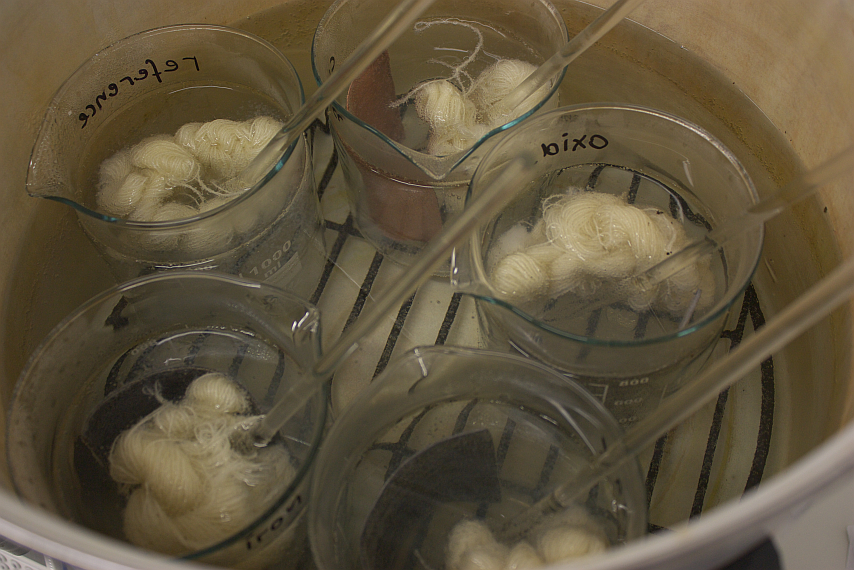Heaps of things to take to the Forum, some larger, some smaller, are turning up at different spots hereabouts - sometimes three in a room, sometimes one. There's a stack of books, there are tools, there's a few canisters now to take the liquids along without them exploring the car illegally... there's materials and extra stuff and the whole documentation logistics like the camera and tripod and so on and so on.
I've started a second batch of bran water, using the starter from the last go, which will be fermenting for a few days now. I am also, since this morning, the proud owner of a lot of 250 ml lab glasses - of which a lot can fit into a single canning pot, and thus we can run a good number of sample dyeings at once.
A waterbath is the tried-and-trusted method to have the same temperature curve for all the samples, and to do them at the same time. We've used that method before when doing dyeing experiments, but with the 1 l beakers, and only 5 or, at the most, 6 will fit into the pot.
If my math and rudimentary drawing skills are correct, we'll be able to fit 20 of the 250 ml beakers into the same pot easily. And though using the small pots means that we'll only be able to do very small samples, and run the risk of them being dyed not completely evenly, having the large number for a run seems, to me, to be an acceptable trade-off.
This, by the way, is one of the bits that I find both exhausting and fascinating when planning and doing archaeological experiments: The myriad decisions that you have to make. Smaller jars or larger ones? Sometimes things and processes don't scale well, and there's a point at which it becomes difficult to measure the very small amounts, plus the inevitable tiny differences will have a much larger impact. Natural substances (like raw, fresh tartar) or processed? The natural stuff or raw stuff may have components that change the outcome, but the processed pure form means it will be possible to repeat the experiment better. What to document, and how often? Sometimes taking measurements will disturb the process, but not taking them means you'll stand there lacking data. How many variables to test, and which ones are the important ones?
So, so many questions. There's a decision to make at every single step, and an experiment has a lot of steps, even if it's a simple one. So you make the decisions, and then you stick with them, and you hope they were the right ones!
(No blog post tomorrow, by the way - it's a holiday here.)
